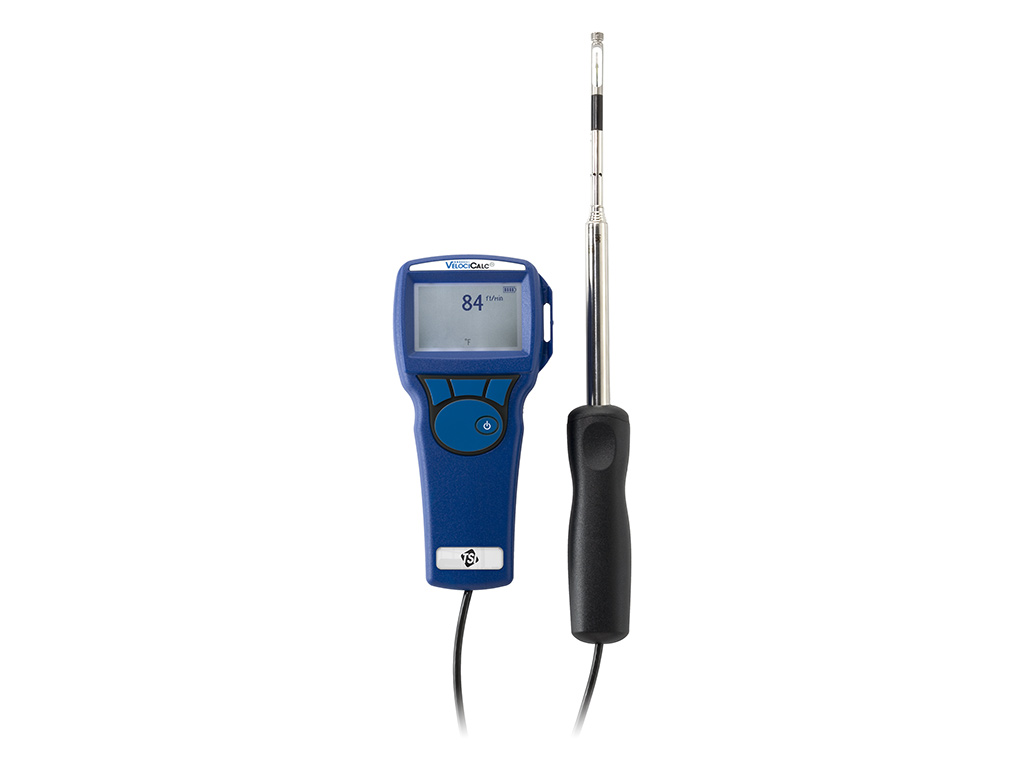
Welcome to the Ventilation and Critical Space Testing category page, where we focus on the importance of maintaining clean and healthy air in various types of critical spaces, such as laboratories, healthcare facilities, and industrial workspaces. Proper ventilation and air quality control are crucial for the health and safety of workers and occupants, as well as the overall productivity and efficiency of the facility. This category offers a wide range of products and services to help ensure that your critical spaces are properly ventilated and meet the necessary air quality standards. From air flow measurement devices and air sampling pumps to specialized testing services, we have everything you need to maintain a healthy and safe work environment.



Conducting ventilation testing in a workplace has several benefits, including ensuring a healthy and safe working environment for employees. Proper ventilation is crucial in reducing exposure to harmful substances, such as chemical fumes and airborne particles, that can cause respiratory problems or other health issues. Ventilation testing can also help to identify any deficiencies in the ventilation system and allow for necessary repairs or improvements to be made. Additionally, proper ventilation can improve indoor air quality, increase energy efficiency, and reduce the risk of fire or other safety hazards.
Critical spaces such as clean rooms and laboratories should be tested for air quality on a regular basis, typically every 6-12 months or more frequently if required by regulatory agencies or industry standards. The frequency of testing may also depend on the level of risk associated with the critical space and the types of activities that take place within it. It is important to consult with a qualified professional to determine the appropriate testing schedule for specific critical spaces.
Various types of equipment are used for ventilation and critical space testing. Room pressure monitors can be used to measure and control the differential pressure between two rooms or spaces to ensure proper airflow and prevent contamination. HVAC systems can be used to manage ventilation and air quality in larger spaces, such as offices or industrial facilities. Laboratory enclosures and biological safety cabinets can provide a controlled environment for scientific research and experimentation. Particle counters are used to measure and monitor airborne particles, while nanoparticle counters are used to detect particles on a nanometer scale. All of these types of equipment are essential for ensuring proper ventilation and air quality in critical spaces.
The most common contaminants that can affect indoor air quality in a workplace include volatile organic compounds (VOCs) from products such as cleaning agents, pesticides, and adhesives, mold and mildew, carbon monoxide and carbon dioxide from combustion sources, radon, allergens, and particulate matter such as dust, pollen, and smoke. These contaminants can have negative health effects on workers and impact productivity, making it important to conduct regular ventilation and air quality testing.
The air exchange rate in a room can be measured using a variety of methods, such as using tracer gases, carbon dioxide sensors, or smoke visualization techniques. It is important to measure the air exchange rate because it determines how frequently the air in a space is replaced by fresh air, which directly affects indoor air quality. A higher air exchange rate generally means that contaminants are diluted more quickly, and can lead to improved air quality and reduced health risks. Additionally, measuring the air exchange rate can help ensure that ventilation systems are functioning properly and meeting regulatory requirements.
A critical space is a controlled environment, such as a laboratory or cleanroom, where the concentration of airborne particles and contaminants needs to be tightly regulated to maintain product quality or protect personnel from exposure to hazardous materials. The regulatory requirements for maintaining air quality in these spaces vary depending on the industry and application, but typically involve monitoring and controlling factors such as air exchange rates, pressure differentials, temperature, humidity, and particulate and microbial counts. The regulations may also specify the types of equipment, such as ventilation systems and air filters, that must be used to maintain air quality standards in critical spaces. Compliance with these regulations is critical for ensuring the safety of workers and the quality of products produced in these environments.
A smoke test is a technique used to test the performance of ventilation systems. It involves the use of a smoke generator to produce a non-toxic, visible smoke that is released into the air. The smoke can then be observed as it moves through the ventilation system, allowing any areas of poor airflow or leaks to be identified. Smoke testing is particularly useful in critical spaces such as laboratories, clean rooms, and hospitals, where air quality is critical. It can also be used to identify areas of poor ventilation in non-critical spaces such as offices and warehouses. Smoke testing is a non-invasive and cost-effective method of identifying issues with ventilation systems, and it is often used as a preliminary test before more detailed testing is carried out.
There are several types of air filters used in HVAC systems, and they vary in terms of their efficiency in removing airborne particles from the air. The most common types of air filters include:
The type of air filter used in an HVAC system can have a significant impact on indoor air quality. Higher efficiency filters can help to remove smaller particles from the air, improving overall air quality and reducing the risk of respiratory issues. It’s important to consider the MERV rating when selecting an air filter, as higher ratings indicate greater efficiency in capturing particles. However, it’s also important to ensure that the HVAC system is designed to accommodate the selected filter, as using a filter that is too restrictive can lead to decreased airflow and reduced system performance.
Ventilation guidelines in healthcare facilities vary depending on the type of facility, the area within the facility, and the type of patients being treated. However, in general, healthcare facilities must maintain proper ventilation to prevent the spread of infectious diseases and maintain a safe environment for patients, staff, and visitors. The American Society of Heating, Refrigerating, and Air-Conditioning Engineers (ASHRAE) provides guidelines for ventilation rates in healthcare facilities, which take into account factors such as the number of occupants, the type of activities being performed, and the potential for airborne transmission of infectious diseases. Additionally, healthcare facilities must comply with regulations set by organizations such as the Occupational Safety and Health Administration (OSHA) and the Centers for Medicare & Medicaid Services (CMS), which provide standards for ventilation in specific areas such as operating rooms and isolation rooms.
Air quality testing and ventilation improvements can have a significant impact on worker productivity and health in a workplace. Poor indoor air quality can lead to a range of health problems, including respiratory issues, headaches, fatigue, and allergies, which can result in increased absenteeism and reduced productivity. Additionally, inadequate ventilation can result in the buildup of harmful pollutants and gases, which can cause serious health problems in workers. By conducting regular air quality testing and making necessary ventilation improvements, employers can create a healthier and more productive work environment, reduce employee absenteeism, and improve overall worker satisfaction.
Tel +1 561-912-9809 / 561-9112-7201
E-mail [email protected]
6590 W Rogers Circle Suite# 11&12
Boca Raton – FL 33487
+1 561-912-9809 / +1 561-912-7201
[email protected]
6590 W Rogers Circle, Suite #11&12
Boca Raton, FL 33487